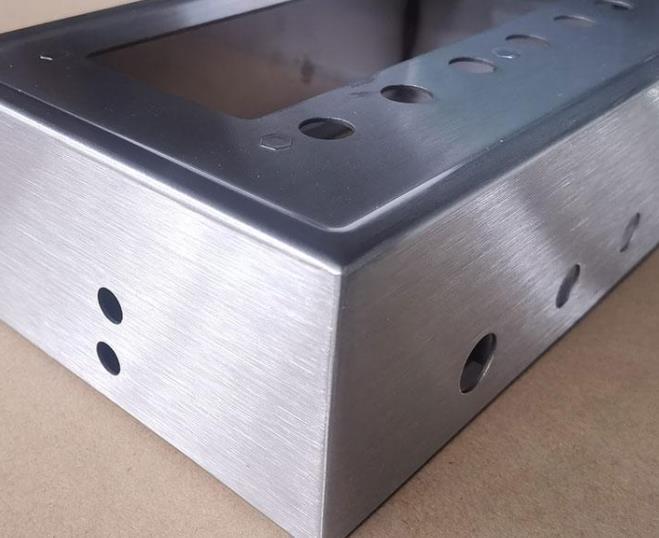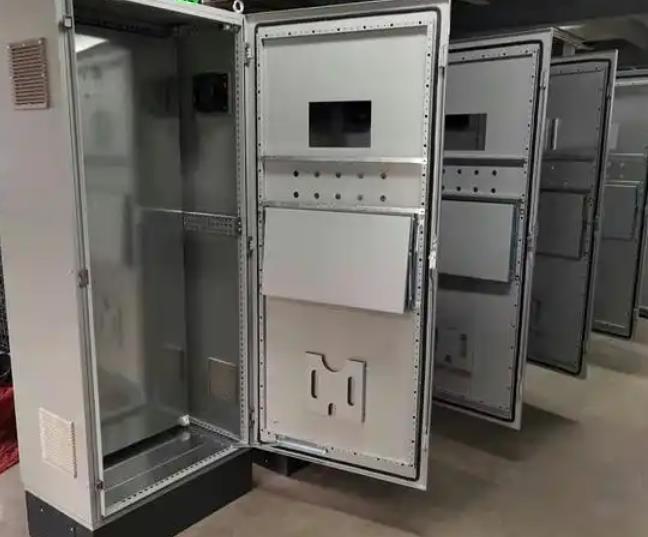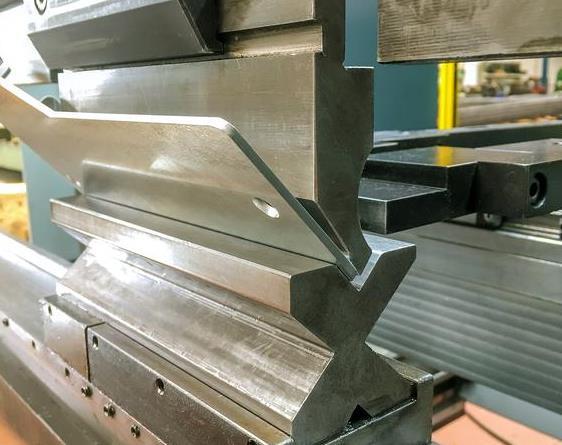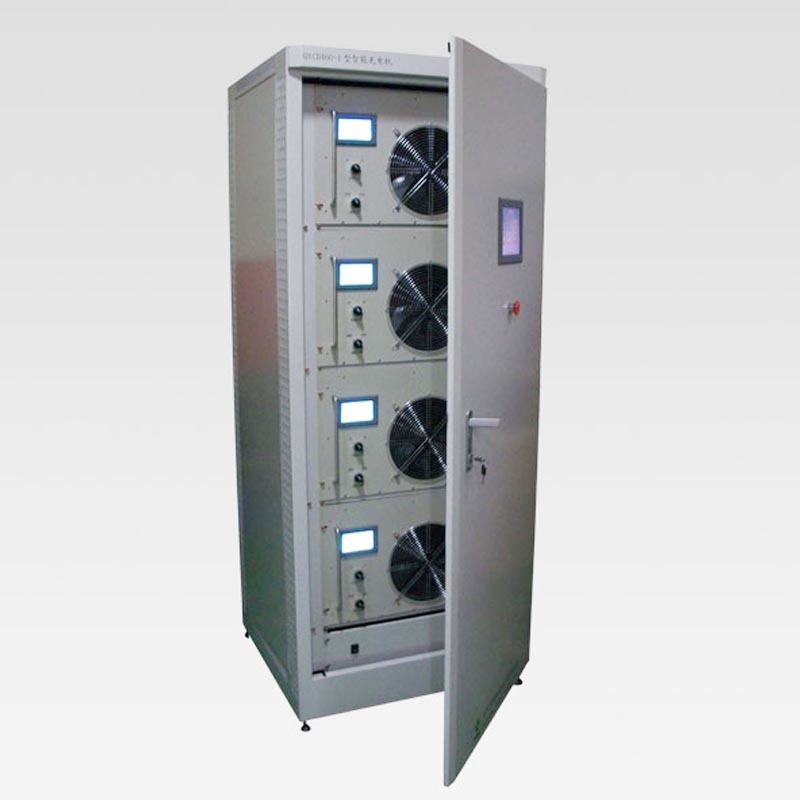Sheet metal shell processing manufacturer
Release time:
2025-01-13
【Summary】Sheet metal processing of enclosures is an important metal processing technology, widely used in fields such as electronics, communications, automobiles, aviation, and home appliances. Cangzhou Xinpeng Electronic Chassis Equipment Co., Ltd. will provide a detailed introduction to sheet metal enclosure processing: 1. Basic Concept Sheet metal enclosure processing refers to the process of transforming metal sheets into enclosures with specific shapes and structures through techniques such as cutting, bending, and welding. These enclosures typically possess good mechanical properties, protective features, and aesthetic appeal. 2. Process Flow The main process flow of sheet metal enclosure processing includes the following steps: Material Selection: Choose suitable metal sheets based on the product's usage environment and performance requirements, such as stainless steel, aluminum sheets, copper sheets, cold-rolled steel sheets, etc. Design Drawing: Use design software like CAD to create a three-dimensional model of the enclosure according to product requirements and generate processing drawings. The drawings must indicate details such as Size tolerances, bending angles, hole position information, and other specifics.
Sheet Metal ProcessingThe shell is an important metal processing technology, widely used in electronics, communications, automotive, aviation, home appliances, and other fields.Cangzhou Xinpeng Electronic Chassis Equipment Co., Ltd.Let me introduce sheet metal shell processing in detail:
I. Basic Concepts
Sheet metal shell processing refers to the processing of metal plates into shells with specific shapes and structures through processes such as cutting, bending, and welding. These shells usually have good mechanical properties, protective properties, and aesthetics.
II. Process Flow
The main process flow of sheet metal shell processing includes the following steps:
- Material SelectionAccording to the product's usage environment and performance requirements, select suitable metal plates, such as stainless steel, aluminum plates, copper plates, cold-rolled steel plates, etc.
- Design DrawingUsing CAD and other design software, design a three-dimensional model of the shell according to the product's requirements and generate processing drawings. The drawings should indicate details such as size tolerances, bending angles, and hole position information.
- CuttingCut the metal plates according to the drawing requirements, which can be done using laser cutting, mechanical shearing, etc. Laser cutting machines can ensure that the produced metal plates are regular and not rough.
- StampingUse stamping equipment and molds to stamp various holes, grooves, protrusions, and other features on the sheet metal parts to meet assembly, heat dissipation, ventilation, and other functional requirements.
- BendingBend the plates according to design requirements using a bending machine to form the basic shape of the shell. CNC bending machines can ensure the accuracy and quality of the bending.
- WeldingUse welding methods such as argon arc welding, laser welding, manual arc welding, gas shielded welding, and carbon dioxide welding to weld various components into a whole. During welding, ensure that the welds are uniform, strong, and defect-free.
- Surface TreatmentPerform surface treatments such as grinding, polishing, spraying, and electroplating on the welded shell to improve its aesthetics and corrosion resistance. Electrostatic powder coating is mainly used for welded parts to prevent rusting at the weld points.
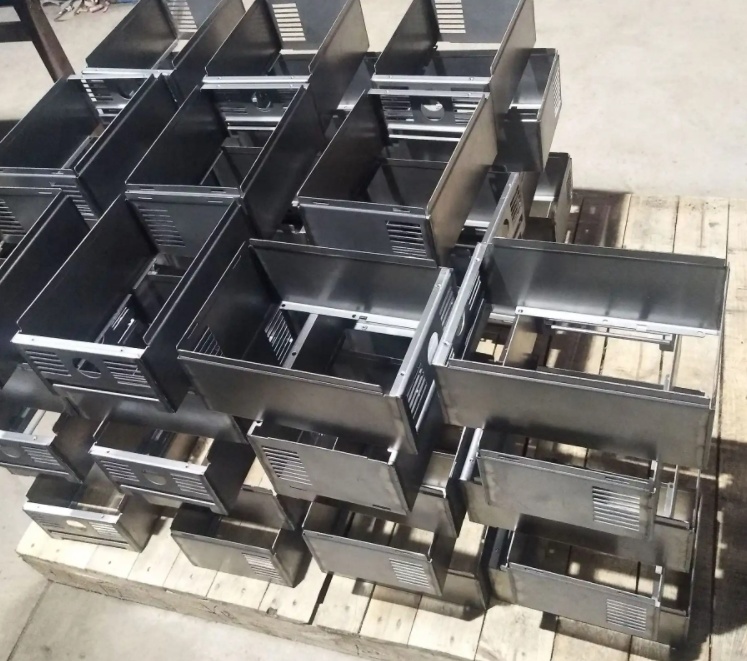
III. Applications
Products of sheet metal shell processing are widely used in various fields, including but not limited to:
- Electronics IndustrySuch as the shells of computers, mobile phones, tablets, and other electronic devices.
- Communications IndustrySuch as protective shells for base stations, switches, and other communication equipment.
- Automotive IndustryUsed for manufacturing parts such as car bodies and engine compartments.
- Aviation IndustryDue to the good mechanical and protective properties of sheet metal shells, they are also widely used in the aviation field.
IV. Future Development Trends
- Automation and IntelligenceWith the continuous development of industrial automation, sheet metal shell processing will gradually achieve automated and intelligent production, improving production efficiency and product quality.
- Material InnovationIn the future, with the continuous development of new material technologies, sheet metal shell processing will adopt more new metal materials, such as high-strength lightweight alloys and composite materials, to meet the product's demand for lightweight and high performance.
- Green and Environmental ProtectionThe increase in environmental awareness has made green manufacturing an important trend in industrial development. Sheet metal shell processing will also focus on environmental protection, using eco-friendly materials and processes to reduce energy consumption and emissions during production.
- Personalization and CustomizationWith the diversification of consumer demands, sheet metal shell processing will pay more attention to personalized and customized production to meet consumers' individual needs for product appearance and functionality.
In summary, sheet metal shell processing, as an important metal processing technology, has a wide range of applications in various fields. With the continuous advancement of technology and industrial development, sheet metal shell processing will usher in broader development space and a better future.
TAG:
Previous
RELATED INFORMATION
2025-01-20
How much do you know about stainless steel sheet metal processing?
2025-01-18
What are the inspection standards for sheet metal processing chassis and cabinets?
2025-01-17
What are the main processes of sheet metal processing?
2025-01-16
What is the process flow of the chassis cabinet?
FAX
ADD
Gengguantun Industrial Development Zone, Qingxian County, Hebei Province, China

WeChat applet


